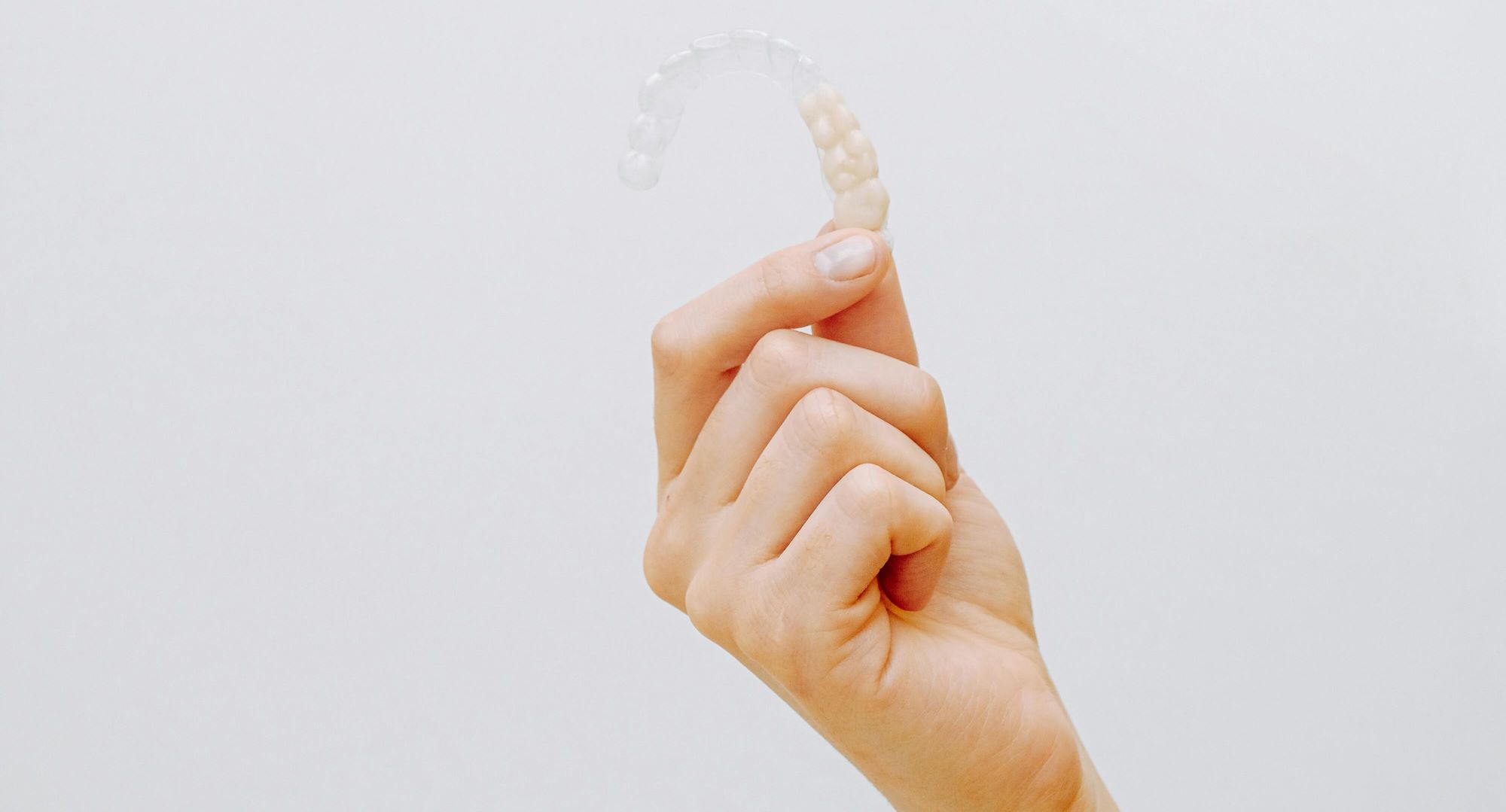
02 Apr Top 5 Clear Aligners Mistakes
Many people want the orthodontic benefits of traditional braces, but aren’t so keen on their appearance. For image-sensitive youths and CEOs alike, clear aligners such as Invisalign offer an enticing alternative: all the oral health benefits of corrected alignment, while still allowing you a normal smile in the meantime.
However, in order for this process to work, the patient has to comply with the advice of their provider. If the patient neglects the instructions given to them and doesn’t take proper care of their aligners and their teeth, they are likely to end up with dental decay and teeth that are no straighter than they began with. Today, we’ll point out five of the top mistakes that those who use clear aligners are likely to fall prey to, hindering the success of their treatment. By avoiding these, you will be on the path for oral health success.
1- Trying to Speed Up the Process
Every set of aligners has to be worn for two weeks. We understand—whether you’re a high schooler, a company CEO, or anywhere in between, you’re going to be eager to finish up the aligning process and flash that brilliant, straightened-out smile that you’ve waited for. The process can be a bit of a pain while you’re going through it, and it may be tempting to try and rush through it. You may think that your teeth look like they’ve shifted into better alignment before the two-week mark is up. But here’s the tricky part: it’s not just your teeth that need to shift.
Braces, clear aligners, any kind of orthodontic correction—they all have to address the entire problem. This means not only fixing the visible tooth, but also shifting the root of the tooth (which you can’t see) and the jaw itself (which anchors the tooth in place). So while your teeth may appear to have shifted before the two week mark, that doesn’t mean the broader structure of your jaw holding them in place has.
This period is not arbitrarily decided; tests have been done to ascertain how long clear aligners should be worn. After experimentation, aligner manufacturers have determined that two weeks is necessary to allow time for the entire structure—jaw, root, gums, all of it—to adjust to the new position it’s being asked to take. So don’t try and rush the process. It won’t achieve the results you want, and it is likely to cause more damage to your mouth in the end.
2- Taking Them Out When You’re Not Supposed To
On the one hand, there’s the person who wears them 24 hours a day to try and rush the process and skip to the next set before they’re ready. But on the other hand, there’s the person who is constantly taking them out, and barely, if at all, reaches the 22-hour threshold of wearing them each day. This is perhaps equally dangerous, and maybe the most common mistake. As Thomas Orthodontics explains, “Consistent wear is crucial for the aligners to exert the necessary pressure on your teeth to guide them to their desired positions.”
If you’re constantly taking them out, you leave your teeth in the lurch: pushed just enough to likely cause you discomfort, but not given enough time in the aligners to actually cause lasting change. All that is accomplished by the constant removal of your aligners is reducing the efficacy of your own treatment and extending the time you’ll need to wear clear aligners in order for the treatment to work.
3- Eating or Drinking with Aligners On
Never eat or drink anything other than water while your clear aligners are in. Unlike with traditional braces, where you have to be careful about eating things that could get caught in the brackets, you can eat whatever you want during clear aligner treatment—provided you remember to take them out first. Clear aligners are not made to stand up to chewing force.
It may not seem like a big deal to drink with them, but remember that drinks have a high potential to stain or warp the aligners that you are paying handsomely for. Any pigmented drink is likely to turn those clear aligners not-so-clear anymore. Any drink that’s not room temperature could cause the plastic made custom to fit your mouth to warp so that it doesn’t work anymore. For all these reasons, it’s best to stick to only cool or room-temperature water while you have your aligners in. When you take them out to eat or drink, remember to put them back in their case so they don’t get misplaced, damaged, or dirty.
4- Handling Too Roughly
While aligners are made to be durable, that doesn’t mean that they can stand up to anything. If you handle the aligners too roughly, they may break, causing an expense and hassle that no one wants. Instead, when handling your aligners:
Take them out from both sides.
If you get into the habit of taking the aligners out only on one side, they could become warped and lose their efficacy.
Do not bite them into place.
This is likely to cause them to break.
Do not use excess force if they get stuck.
If you’re having trouble getting them out, don’t get frustrated or panic. Try using a pull tool to get them out, gargling with salt water, or contacting your dentist if all else fails.
Do not force them into place.
Sometimes, you may have trouble getting them in. The best strategy is still to be gentle. If you try to jam them into place, you will likely only cause them to crack.
Start from the back molar to remove them.
Starting from the back is the best way to release the aligners from your teeth. As always, be gentle and apply force to both sides, not just one.
5- Failing to Clean Aligners
You could be following all the other instructions of your provider yet still harm your oral health if you neglect to clean your aligners every day. As dentist Abbas Eftekhari puts it, “Brushing your teeth without cleaning your Invisalign aligners is like wearing the same dirty clothes after showering.” Gross, right? He adds, “You want to avoid getting used to it, or else your clear aligners can become a breeding ground for all sorts of bacteria.”
As Dr. Eftekhari explains, this has unpleasant consequences in a range of areas. If bacteria and debris are coating your aligners, they won’t fit as well, making them less effective. It will reduce the “clear” effect of your clear aligners; failure to clean them means they’re apt to become cloudy, murky, and dull. It could cost you money, as you may end up needing to replace aligner sets that are too poorly maintained to be effective.
Perhaps most importantly, failure to clean your aligners is a threat to your dental health. Think about it: you’re essentially putting a cover of bacteria directly on top of your teeth, trapping them under a plastic shell of something you know to have the potential to cause cavities. That’s not dental health wisdom. Instead of threatening your dental health with bacteria-infested aligners, take time morning and night to clean your aligners. Brush them thoroughly with a soft toothbrush and rinse them under room-temperature water to get rid of any residue. That way, you’ll be putting clean aligners on top of your clean teeth.
Final Thoughts
Clear aligners are a great way to straighten misaligned bites in a discreet manner, making them a popular choice for youths and adults alike. However, for the treatment to work, you have to be willing to follow through on all the instructions and advice your provider gives. It’s easy to fall into trying to rush the process, slacking on wearing your aligners enough, eating or drinking with them on, handling them too roughly, or failing to clean them properly. But by sidestepping these common mistakes and trusting the advice of dental professionals, you will set yourself up for success. If you have any questions about clear aligners or would like to schedule your next appointment, please contact our office today. Wynne Downtown Dental now offers clear aligners and is ready to help you achieve your best smile!

About Our Team
With over 30 years of expertise in the field of dentistry, our team here at Wynne Downtown Dental is ready to meet your needs. We’re passionate about educating our patients on improving their oral health and helping our patients get the smile they deserve.
